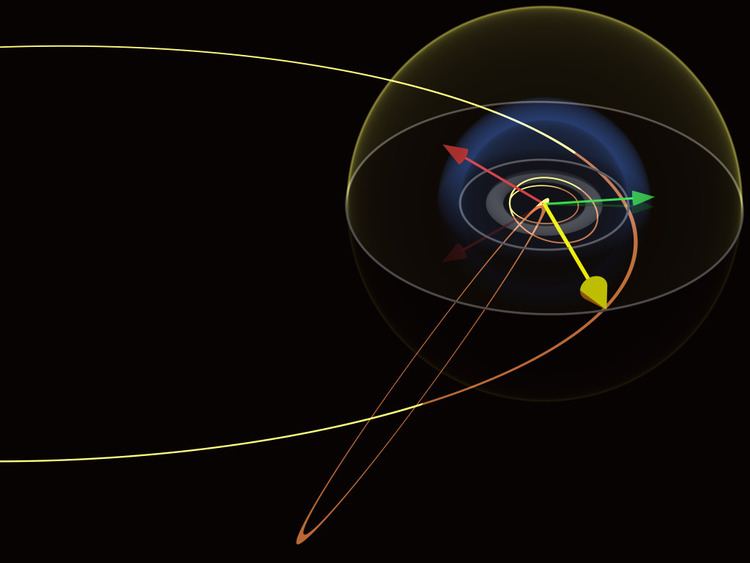 | ||
Below is a list of artificial objects leaving the Solar System. All of these objects are space probes and their upper stages launched by NASA. It does not include those missions that went into orbit around planets, or into orbit around the Sun because they are not leaving the Solar System.
Contents
Planetary exploration probes
Although other probes were launched first, Voyager 1 was able to achieve a higher speed and has overtaken all others. Voyager 1 overtook Voyager 2 a few months after launch, on 19 December 1977. It overtook Pioneer 11 some time in the late 1980s, and then Pioneer 10—becoming the probe farthest from Earth—on February 17, 1998.
Voyager 2 is also moving faster than the probes launched before it, and thus overtook Pioneer 11 in 1997 and will overtake Pioneer 10 sometime in 2021.
New Horizons will also likely pass the Pioneer probes, but will need many years to do so. It will not overtake Pioneer 11 until ~2082 and will not overtake Pioneer 10 until ~2130. Barring some unforeseen gravity assist it will never overtake the Voyagers.
Boosters
Every planetary probe was placed into its escape orbit by a rocket booster. These rockets are themselves on nearly the same trajectory as the probes they launched. Because they cannot be actively guided, their trajectories are now different from the probes they launched (the probes were guided with small thrusters that allow course changes). However, in cases where the spacecraft acquired escape velocity because of a gravity assist, the boosters may not have a similar course and there is the remote possibility that they collided with something. Some objects in heliocentric orbit have been reidentified with a telescope, and so it can be confirmed that they are still there. The boosters on an escape trajectory are:
In addition, two small yo-yo de-spin weights on wires were used to reduce the spin of the New Horizons probe prior its release from the third-stage booster. Once the spin rate was lowered, these masses and the wires were released, and so are also on an escape trajectory out of the Solar System. None of these objects are trackable (they have no power or radio antennae, spin uncontrollably, and are too small to be detected), and their exact positions are unknowable beyond their projected Solar System escape trajectories.
The third stage of Pioneer 11 is thought to be in solar orbit because its encounter with Jupiter would not have resulted in escape from the Solar System. Pioneer 11 gained the required velocity to escape the Solar System in its subsequent encounter with Saturn.
The only objects to date to be launched directly into a solar escape trajectory were the New Horizons spacecraft, its third stage, and the two de-spin masses. The New Horizons Centaur (second) stage is not escaping; it is in a 2.83-year heliocentric (solar) orbit.
The Pioneer 10 and 11, and Voyager 1 and 2 Centaur (second) stages are also in heliocentric orbits.
In order to leave the Solar System, the probe needs to reach the escape velocity. After leaving Earth, the Sun's escape velocity is 42.1 km/s. In order to reach this speed, it is necessary to take advantage of the orbital speed of the Earth around the Sun, which is 29.78 km/s. By passing near a planet, a probe can gain extra speed.
